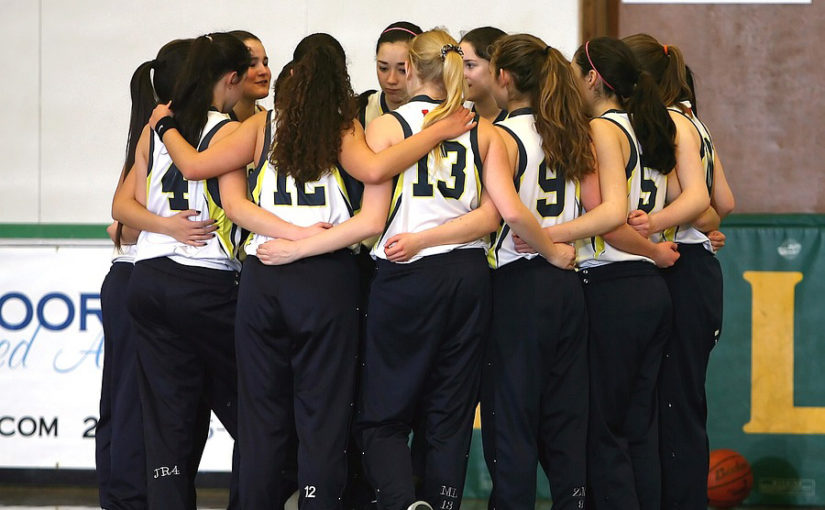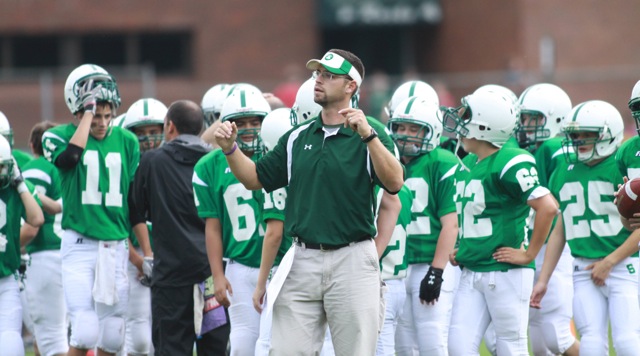Swing offense 101: Swinging your offense to a scoring tune
The swing offense utilizes pieces from several offensive strategies. I developed it from parts of other offenses over the eight years spent scouting offenses while an assistant coach at the University of Wisconsin.
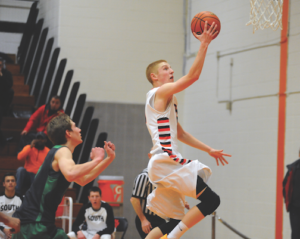 I blended these parts together not because I thought they were innovative or the answer to every defensive wrinkle, but because I really believe in them. The swing offense is basic and relies on solid fundamentals: cutting, screening, spacing and passing.
I blended these parts together not because I thought they were innovative or the answer to every defensive wrinkle, but because I really believe in them. The swing offense is basic and relies on solid fundamentals: cutting, screening, spacing and passing.
Run what’s effective
An offense that works with cuts to the basket off screens is most effective. The two most effective screens are the UCLA screen (upscreen) and backscreens from the wing or flank. These two screens form the basis of the swing offense.‘Big for little’
The swing offense is different because, through the course of the screening action, your traditional “big” players are often out around the perimeter, while “little” players are working on the post.
Every player is responsible for practicing and learning post moves. More often than not, your guards can take advantage of mismatches on the block. Your 5 is still going to play in the post enough to be considered a post player, but they have to be versatile enough to step out, reverse the ball and pass into the post.
Handling aggressive overplays
Many teams we face like to pressure the basketball, so we need an offense that can handle the overplay. This offense is effective against pressure, because it’s a four-out, one-in offense. When one player has the ball, the other four players are tandem partners working off the ball to relieve pressure.
Make more free throws
One statistic we try to achieve in each game is to make more free throws than the other team shoots. Every upscreen and backscreen set for a player going to the basket draws attention. This offense also gets lots of touches in the post, where you’re going to get fouled more often.
The swing offense

DIAGRAM 1: This is the numbering system and the initial set up. Note that 2 and 4 are interchangeable in certain situations. Players need to know that spacing is important. The swing offense features a triangle on the ball side, so don’t clutter the post.
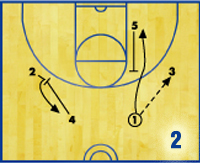
DIAGRAM 2: 1 initiates the action by passing to 3. 1 cuts off an upscreen from 5 to the basket. If the initial cut is stopped, 1 posts up their defender on the block. 2 and 4 exchange on the weak side to occupy the help defense.

DIAGRAM 3: If 1 is not open in the post, 3 reverses the ball to 5, who has stepped out to the perimeter.
5 passes to 2. After the ball has reached 2, 1 backscreens for 3 along the baseline.
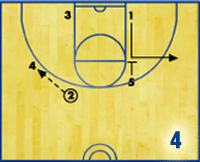
DIAGRAM 4: If 3 is not immediately open after the backscreen, 2 passes to 4. 3 works to get open on the post. 1 and 5 come together initially on the backside before 1 fades to the perimeter.
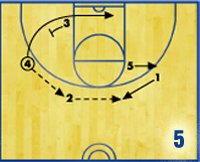
DIAGRAM 5: If the post is shut down, 4 reverses to 2. 4 then cuts off a back screen from 3. 1 steps out to receive the reversal pass from 2, and 5 fades to the perimeter and we are back in our initial setup and spacing. We continue to work the ball to the wing and into the the post, or work into a quick hitter or counter.
Be sure your players use ball fakes when trying to get the ball into the post, as defenders react to ball fakes. They’re a must against better defensive teams. Have your players act animated and simulate ball fakes in practice to get better — even when running this offense without defenders. Getting a defender to react one way on a fake, then passing the other way, is another great way you can get to the free-throw line.
Quick hitters as counters
Our bread and butter is the previous swing motion, which is not very intricate. It relies on good screens, crisp passing and patience. But from time to time, we’ll make adjustments and work special plays into the game plan.
Special No. 1
We’ll run special 1 when we have a good matchup at the point guard and want to run a little two-man game and open up one side of the floor. We also use it as the shot clock is winding down.
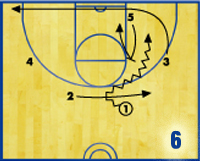
DIAGRAM 6: 1 dribbles toward the middle of the floor as 3 clears through the baseline to the opposite corner. 5 steps out and sets a pick and roll action with 1. 1 dribbles hard to the baseline if they can’t turn the corner. 2 slides over late to set up the option of the reversal pass.
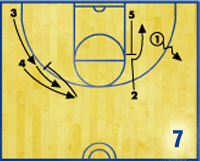
DIAGRAM 7: If the pick-and-roll is defended, we can swing the ball around to 3 in the corner for an open jumper, (3’s defender often gets caught helping on 5’s roll to the basket) step out, set up our ball side triangle, and get back into the offense.
Special No. 2

DIAGRAM 8: This play is simply 2 coming off a ball screen by 5. 1 dribbles to the middle and hands off to 2, who is coming off a screen from 4. 3 clears to the opposite corner. 2 tries to turn the corner off 5’s ball screen, but if it’s not open, 5 rolls to the basket.
If the play is defended, we back out get into proper spacing and run the offense.
Special No. 3
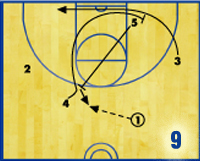
DIAGRAM 9: Special 3 is another way of getting into our backscreen to initiate the motion for a change of pace. 5 comes out and sets an upscreen for 4, then steps out to receive the pass from 1. 4 sets the backscreen for 3 running along the baseline, and we’re into our offense.
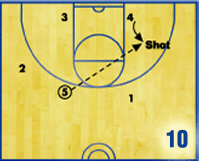
DIAGRAM 10: After all of the screening action takes place, if 4 steps out for the short jump shot, it’s usually open.
Special No. 4
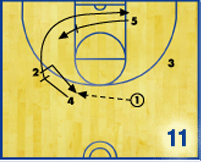
DIAGRAM 11: This is another way to initiate backscreen action. 2 makes a shallow cut toward the basket, then replaces 4 on the lane line to receive the pass from 1. 4 becomes the cutter along the baseline off the backscreen from 5. If 5 steps out to look for the short jumper after the screen, it is usually open.
Special No. 5
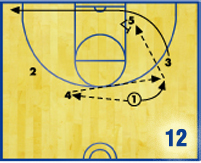
DIAGRAM 12: There are also times when you’ll want to isolate 5. 1 passes to 4, as 3 clears to the opposite corner. 1 fades toward the wing and gets a return pass back from 4.
When the second pass is in the air, 5 fakes their defender across the lane line, drop steps, and pins the defender inside.

